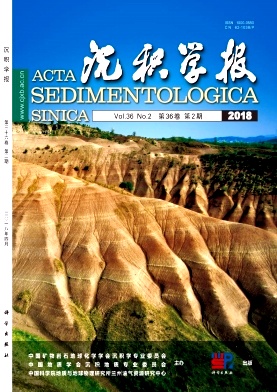Depositional Sequence and Carbon Isotope Chemostratigraphy of the Lower Carboniferous Xiangshan and Lower Permian Dingjiazhai Formations in Baoshan Block, Yunnan: Paleogeographic Implications
doi: 10.14027/j.issn.1000-0550.2018.003
- Received Date: 2016-09-08
- Rev Recd Date: 2017-04-25
- Publish Date: 2018-04-10
-
Key words:
- Baoshan Block /
- carbon isotope /
- Gondwana /
- sedimentary sequence /
- paleogeography
Abstract: Better understanding of the late Paleozoic sedimentary sequences in Baoshan block were obtained by detailed field measurement, borehole logging combined with sequence stratigraphic and facies studies as well as carbon and oxygen isotopic analysis of the lower Carboniferous Xiangshan Formation and lower Permian Dingjiazhai Formation at the Xiyi area, northern Baoshan Block. Three lithologic units were recognized in the Lower Carboniferous Xiangshan Formation, which are in ascending order represent lower slope, upper slope and carbonate platform depositional settings, respectively. The Lower Permian Dingjiazhai Formation was interpreted to be glacial-marine deposits according to distinctive pebbly calcareous moraine diamictite and local development of dropstones. The δ13CPDB profile demonstrates a gradual increasing trend up section in the Lower Carboniferous Xiangshan Formation, indicating a relatively stable sedimentary environment possible due to a steady increase of organic carbon burial. Combined with previous paleomagnetic results, biotic correlation and tectonic studies, it is presumed that the Baoshan Block was in a stable setting as a part of the northern Gondwana. However, the δ13CPDB values drop dramatically on the cessation of the pebbly moraine carbonate which represents the ending of glacial period, and correspond well with the first temperature rise event as well as massive basalt eruption in the early Permian. The above collectively indicate that the Baoshan Block was separated from the northeast Gondwana and started to drift northwards in the early Permian. The present study not only sheds light on the paleoceanic, paleogeographic and paleoclimatic significance of the Paleozoic Submasu Block, but also provides new carbon isotope chemostratigraphy for the contemporary sedimentary sequences.
| Citation: | LUO Liang, WANG DongBing, YIN FuGuang, LIAO ShiYong, REN Fei, NING KuoBu, TANG Yuan. Depositional Sequence and Carbon Isotope Chemostratigraphy of the Lower Carboniferous Xiangshan and Lower Permian Dingjiazhai Formations in Baoshan Block, Yunnan: Paleogeographic Implications[J]. Acta Sedimentologica Sinica, 2018, 36(2): 291-301. doi: 10.14027/j.issn.1000-0550.2018.003 |






 DownLoad:
DownLoad: